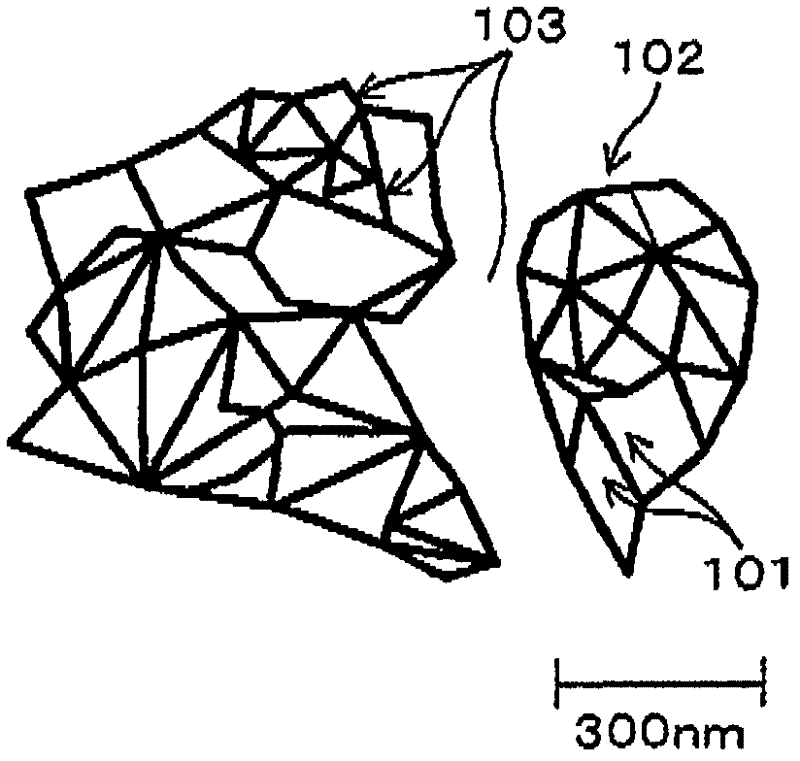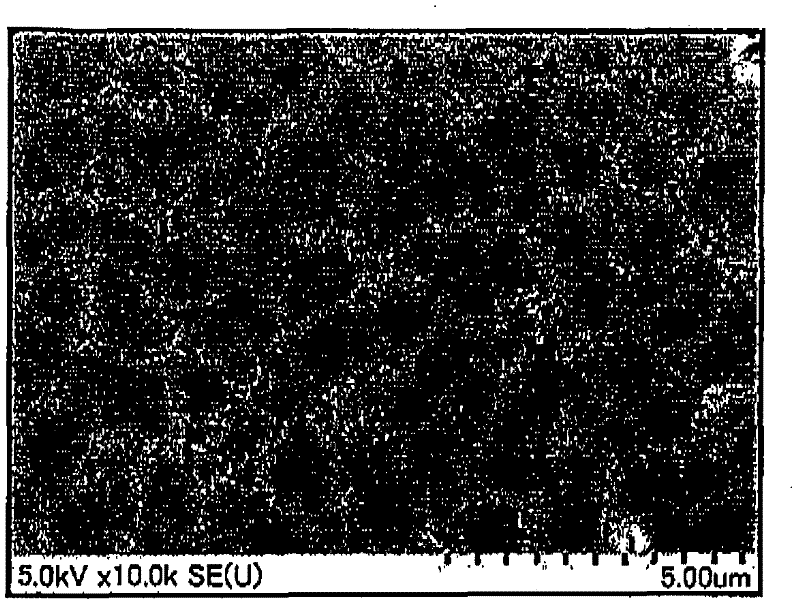Positive electrode active material for secondary battery and magnesium secondary battery using the same
A positive electrode active material, magnesium secondary battery technology, applied in the direction of active material electrodes, secondary batteries, battery electrodes, etc., can solve the problems of slow diffusion speed and easy trapping, achieve high cycle retention rate, and increase battery capacity , the effect of high energy density
- Summary
- Abstract
- Description
- Claims
- Application Information
AI Technical Summary
Problems solved by technology
Method used
Image
Examples
Embodiment
[0108] (Production of Oxide Glass)
[0109] Table 1 shows the glass composition produced and examined.
[0110] All of the components are represented by mass % (mass percentage) in terms of oxides. The raw materials of each component are vanadium pentoxide, phosphorus pentoxide, iron oxide, manganese dioxide, silver oxide, cuprous oxide, cobalt oxide, nickel oxide, tungsten oxide and boron oxide. For lithium, sodium, and potassium, lithium carbonate, sodium carbonate, and potassium carbonate were used. For fluorine, chlorine, iodine, and sulfur contained in the glass, lithium fluoride, silver chloride, copper iodide, and lithium sulfide were used.
[0111] The oxide glass was produced in the following procedure.
[0112] Put 300 g of the mixed powder obtained by blending and mixing the raw material compounds so as to have the composition shown in Table 1 into a platinum crucible, and heat it to the temperature shown in Table 1 at a heating rate of 5 to 10°C / min (°C / min) usi...
PUM
| Property | Measurement | Unit |
|---|---|---|
| size | aaaaa | aaaaa |
| thickness | aaaaa | aaaaa |
| pore size | aaaaa | aaaaa |
Abstract
Description
Claims
Application Information
 Login to View More
Login to View More - R&D
- Intellectual Property
- Life Sciences
- Materials
- Tech Scout
- Unparalleled Data Quality
- Higher Quality Content
- 60% Fewer Hallucinations
Browse by: Latest US Patents, China's latest patents, Technical Efficacy Thesaurus, Application Domain, Technology Topic, Popular Technical Reports.
© 2025 PatSnap. All rights reserved.Legal|Privacy policy|Modern Slavery Act Transparency Statement|Sitemap|About US| Contact US: help@patsnap.com



